SEC | S20W3: "Identification and Elimination of Crop Pests"

It's a pleasure to this week's course, it interests me because Identifying and eliminating crop pests is very important for sustainable agriculture. Effective pest management will protect the crops from damage, & ensure healthy yielding & bountiful production, which contributes to food security. Understanding pest biology, behavior & its environmental impact is so vital in developing strategies for monitoring, controlling, and preventing infestation, & promoting eco-friendly farming practices.
When you visited the crop field, what pests did you observe there? How did you identify that it was a pest? |
|---|
The last time I visited my parents in the village, I went to their farm, and I observed several pests impacting crops' health negatively. Among them were weeds; it was proliferated throughout the fields, competing for nutrients and water with the desired plants. I identified the weeds by their rapid growth and distinct foliage compared to the cultivated plants.
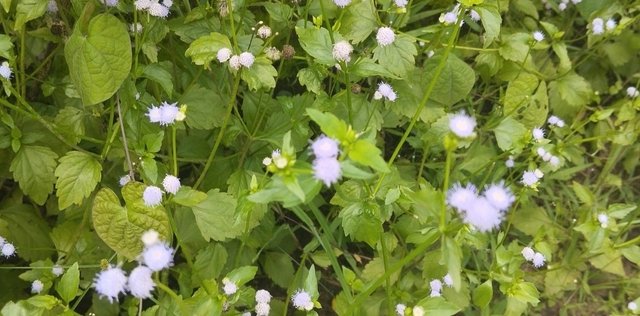
The Common weeds I could identify include chickweeds, cover crops, and dandelions; I could easily recognize them by their characteristics, leaf shape and flowering patterns.
Additionally, I identified stem borers and caterpillars; they were infesting the leafy vegetables, like okra, fruited pumpkins and corn leaves and even in their fruits causing visible damage as seen in the below image:
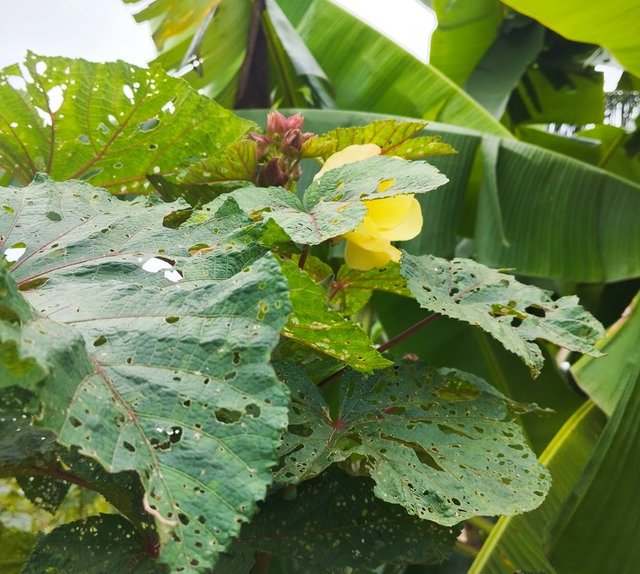
I know the caterpillars through their elongated bodies and voracious eating habits, I could see the evidence by chewed leaves and frass (caterpillar droppings) I found on the farm.
Lastly, I identified rodents like squirrels 🐿️ they were cutting off some yams' sprouts and also primarily field mice; these were evident in the kitchen around corn storage areas, I saw its droppings and gnaw marks on maize 🌽 containers.
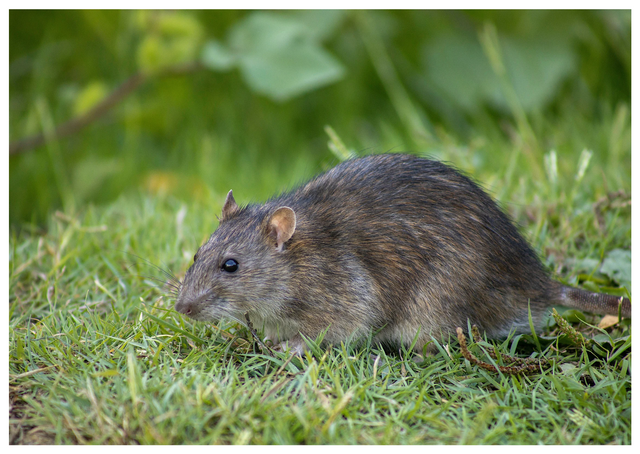
I confirm the presence of rodents by their quick movements and their nesting. I observed their physical characteristics and the damages they caused, I informed my parent about it so that they could implement potential management strategies to mitigate their impact on the farm's productivity.
Which pesticides do you think are suitable for controlling the pests you observed in the field? Please express your own opinion. |
|---|
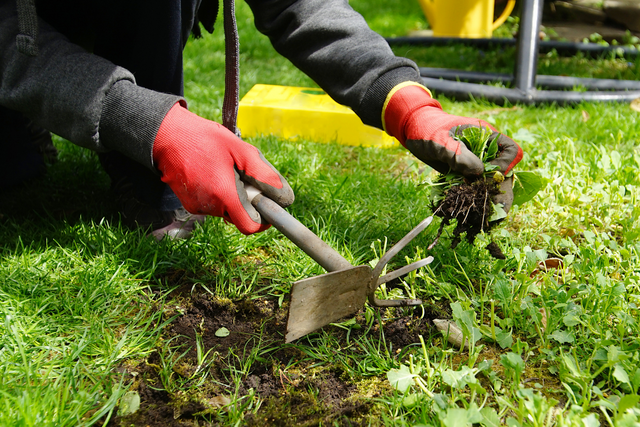
To effectively control pests like weeds, we normally pull off the weeds through the process known as weeding, though the weeds will grow again after some months the farmer has to pull off the weeds again, this process is a bit demanding but then it's better because the pulled of weeds will be left in the farm and it will serve as manures to the desired plant.
Well, I learned that herbicides like glyphosate or pre-emergent options like prodiamine are effective in preventing weed growth. But these needed to be applied cautiously to avoid harming desired plants, that is why I preferred weeding to the latter.
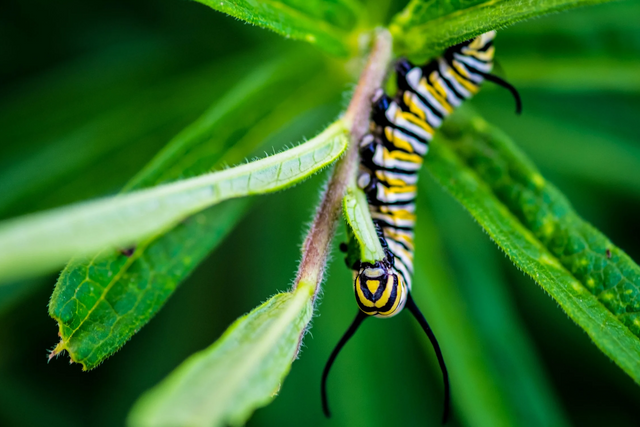
For caterpillars, insecticides like Bacillus thuringiensis (Bt) are ideal, because they target specific larvae without affecting other beneficial insects. (BT) are also environmentally friendly and it's safe for both humans and pets.
Rodenticides like Aluminium phosphate, phenanthate, and acephate can be used to control rodents; I learned through this course that 2ml of the aforementioned can be effective. However, farmers should use this method cautiously, placing them in the bait station to avoid harming non-target animals. Also, farmers should integrate cultural practices like maintaining garden hygiene as this will enhance pest control effectiveness while promoting a healthy ecosystem. Lastly, it's important to follow instructions on the label and consider integrated pest management techniques for sustainable results.*
Describe the method of trapping insects by creating a pest trap using various natural materials (such as containers and adhesive substances). |
|---|
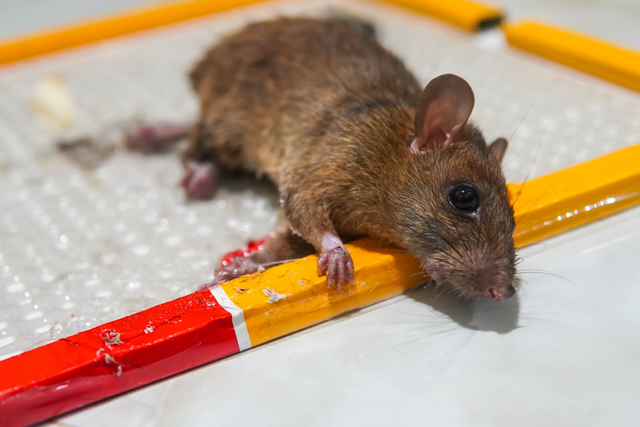
To create a natural insect trap:
Start by selecting a shallow container like a jar or dish like the above image.
Coat the bottom with a sticky substance like syrup, honey, or sugar water.
Add attraction by placing a bait-like piece like ripe fruits, drops of essential oils like peppermint or citrus, fish, or crayfish, inside the trap.
*Then cover the container with a mesh or cloth to enhance effectiveness, and place it in such a way that it will allow insects or rodents to enter but not escape.
Finally, keep the trap in areas where insects and rodents are prevalent, areas like gardens or kitchens.
Check the trap regularly and dispose of trapped insects or rodents to maintain the trap’s efficiency.
Discuss in detail which crops you think the use of bio-chemicals is beneficial and cost-effective. |
|---|
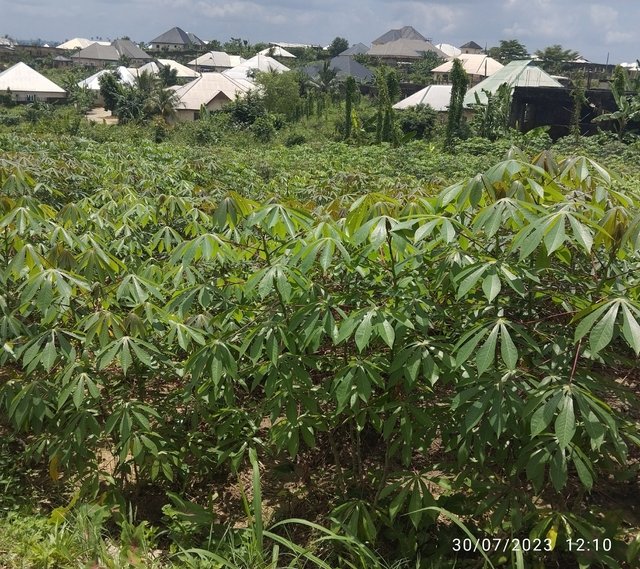
I think the use of bio-chemicals can be particularly beneficial and cost-effective for staple crops like Maize, cassava, and rice in my locality.
We Akwa Ibomites like maize 🌽 it is one of the significant sources of food and income over here, but farmers here are faced with pests like stem bore,rs, ,armyworms, and weaver birds (nsiak). So bio-pesticides like Bacillus thuringiensis, Scarecrow, and automated bells which can be rang from time to time, can effectively manage these pests while reducing harmful chemical residues.
Cassava is another vital crop here. We use it in producing many other foods like tapioca, garri, and Fufu etc but cassava is susceptible to diseases like cassava mosaic virus. So biochemical applications, such as virus-resistant cassava cultivars and plant growth-promoting rhizobacteria, can enhance the yielding and quality of cassava produced, and often with lower costs than chemical treatments.
Lastly, rice is commonly affected by weeds and pests, like weaver birds (we call it nsiak in Ibibio). Can benefit from bio-herbicides like Beloukha insecticidal soaps and a Scarecrow; these provide effective pest control without harming beneficial insects.
Overall, I believe that adopting bio-chemicals in these crops will not only improve agricultural sustainability and food security in my locality, but it will also align with global shifts toward eco-friendly farming practices.
Make a chart of which pesticides are used for which pest in your area and discuss with us. Special Note: If not aware of this, a permanent farmer or anyone involved in agriculture can take help.. |
|---|
Here's a chart summarizing commonly used pesticides in Area for specific pests:
| Pest | Common Pesticides | Type |
|---|---|---|
| weaver birds | 1. Scarecrow | Integrated Pest Management (IPM) |
| 2. automated bells | Integrated Pest Management (IPM | |
| Caterpillars | 1. DeltaGard (Deltamethrin) | Insecticide |
| 2. BT (Bacillus thuringiensis) | Biological Insecticide | |
| 3. Karate (Lambda-cyhalothrin) | Insecticide | |
| Weeds | 1. Glyphosate | Herbicide |
| 2. Paraquat | Herbicide | |
| 3. Weeding | Integrated Pest Management (IPM) | |
| Rodents | 1. Rodent Bait (various brands) | Rodenticide |
| 2. Phosphate | Rodenticide | |
| 3. Aluminum | Rodenticide |
It's important to ensure proper handling and application of the above pesticides, especially the insecticides, just follow the safety guidelines and regulations.
In conclusion, I've come to learn through this course that effective identification and elimination of crop pests is essential because it can bring about sustainable agriculture. When farmers can recognize the pests accurately, and understand their behaviors, they will be able to implement targeted control measures. Lastly, farmers should utilize integrated pest management strategies like weeding, scarecrows, traps, etc & most especially the bio-chemicals methods, in farming as this will enhance crop health, minimize environmental impact, and ensure productive yields, ultimately contribute to food security and ecosystem balance.
Observations and suggestions:
The main characteristics of caterpillars are their elongated bodies and feeding on weevils. They always like to eat leaves for fun. Rats are the most deadly to crops as I have seen this season's post. Applying glyphosate will give you peace of mind for 4-5 months, saving you money and effort later on. Pests used to repel rats have a lot of smell added, so they have to be sprayed with great care. The rat catching powder is very interesting here, the rats are easily trapped. Pesticides used in your area are used worldwide. You wrote very well ma'am.
Feedback:
0.00 SBD,
1.95 STEEM,
1.95 SP
Thank you so much for the review, it's good to learn that people from other parts of the world are using the same pesticide.
Upvoted. Thank You for sending some of your rewards to @null. It will make Steem stronger.
I appreciate your support @josepha!
Crops are always attacked by various diseases. The farmer must keep an eye on it and use timely pesticides. The rate of production can be reduced due to attack by disease pests. Thank you very much for sharing dear friend.
It's a pleasure! Thank you so much for your contribution and compliment. I believe that identifying these pests and their behaviors will help farmers to know how to control them.
0.00 SBD,
0.05 STEEM,
0.05 SP